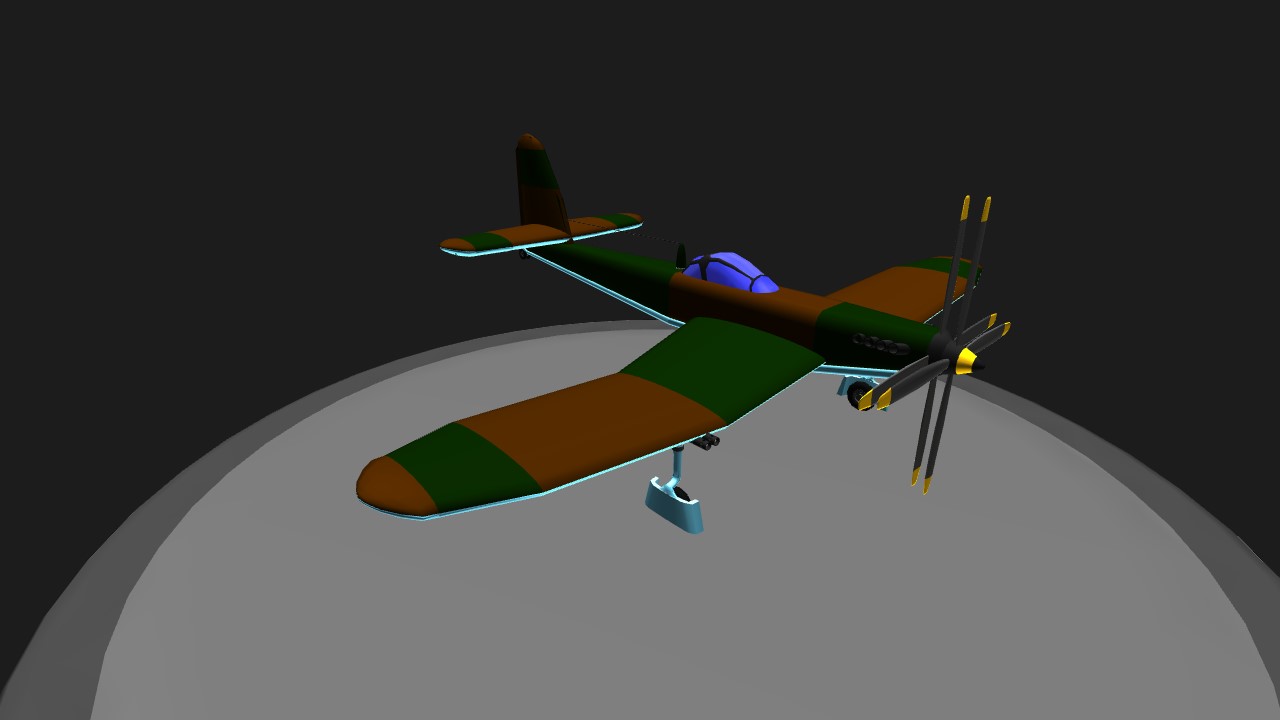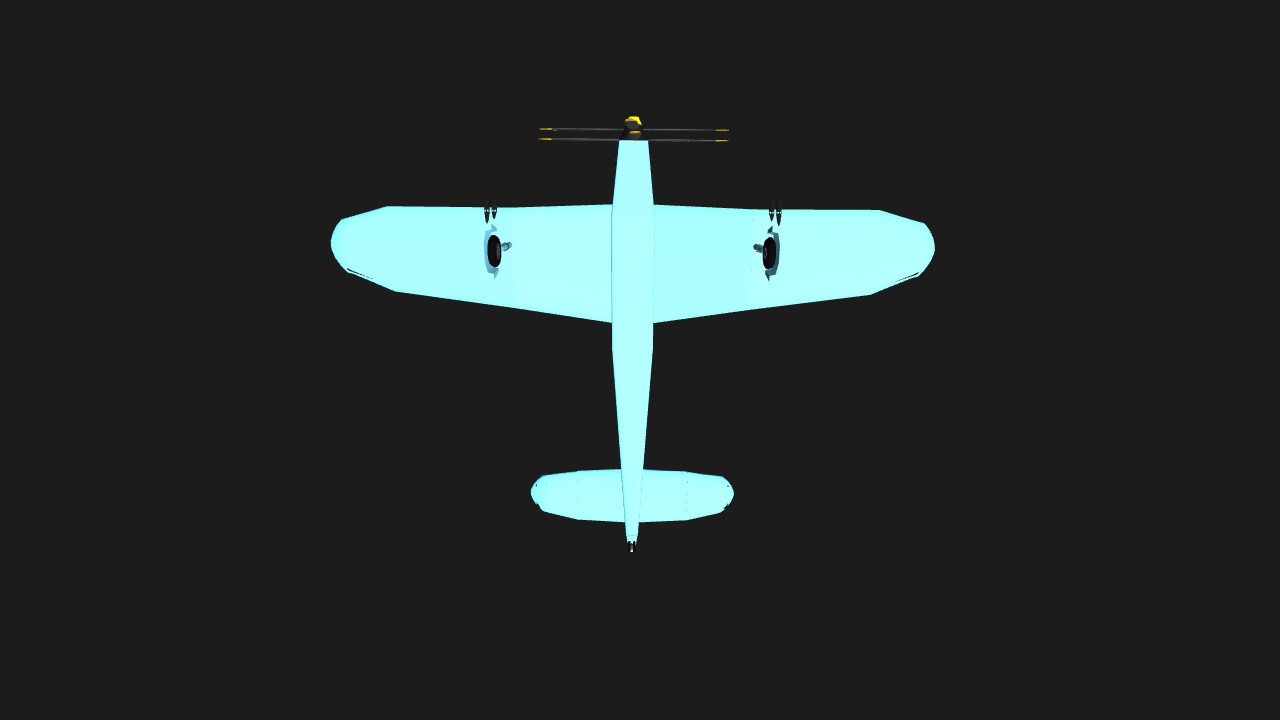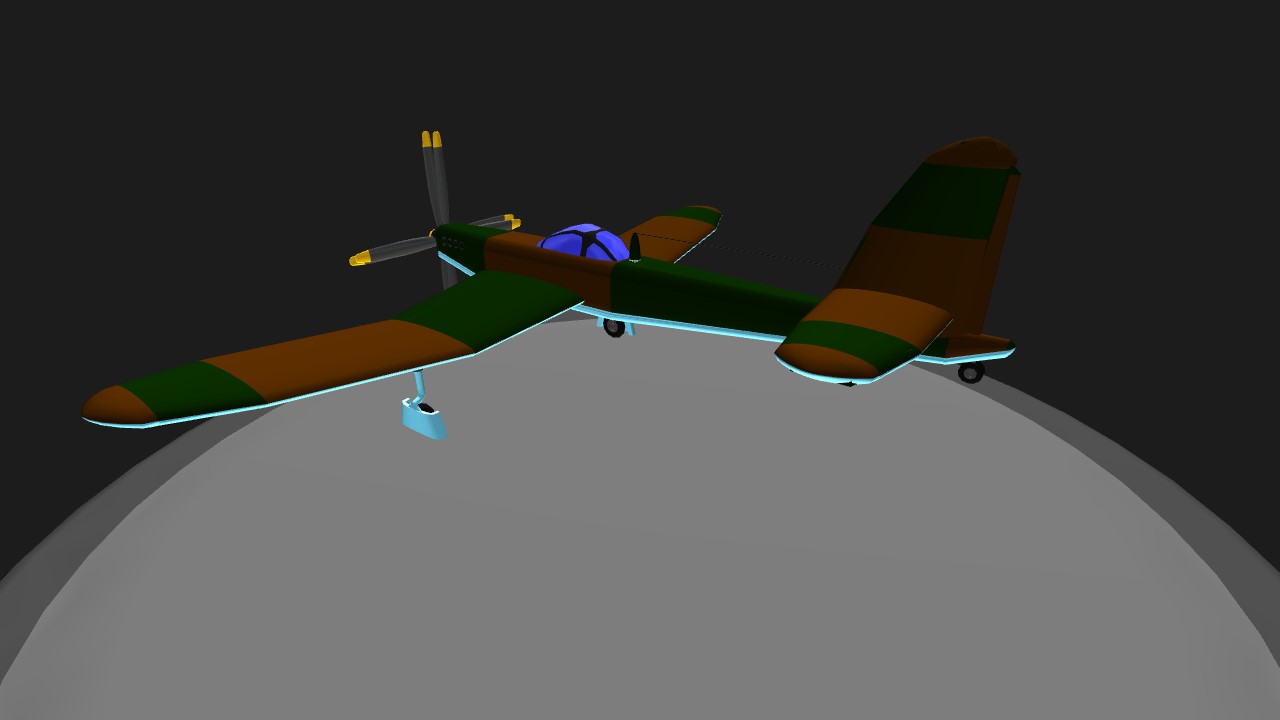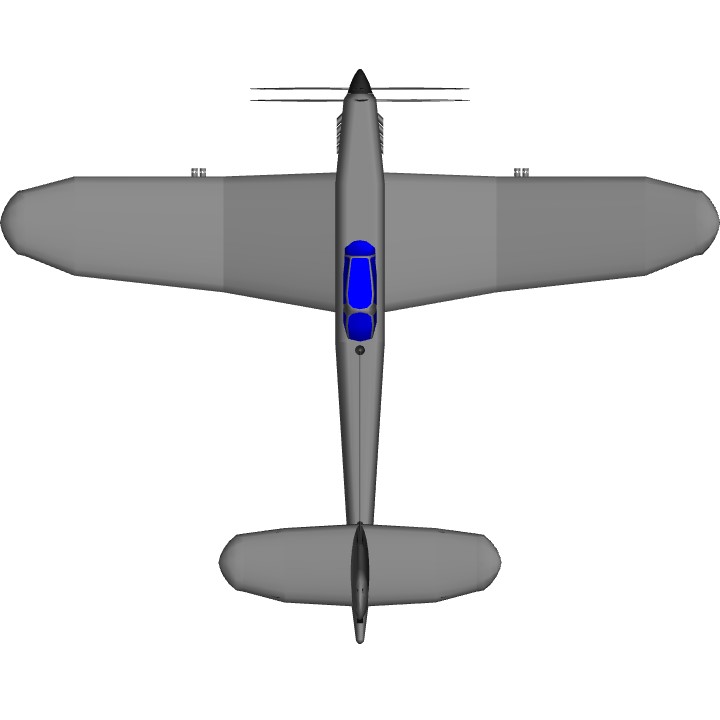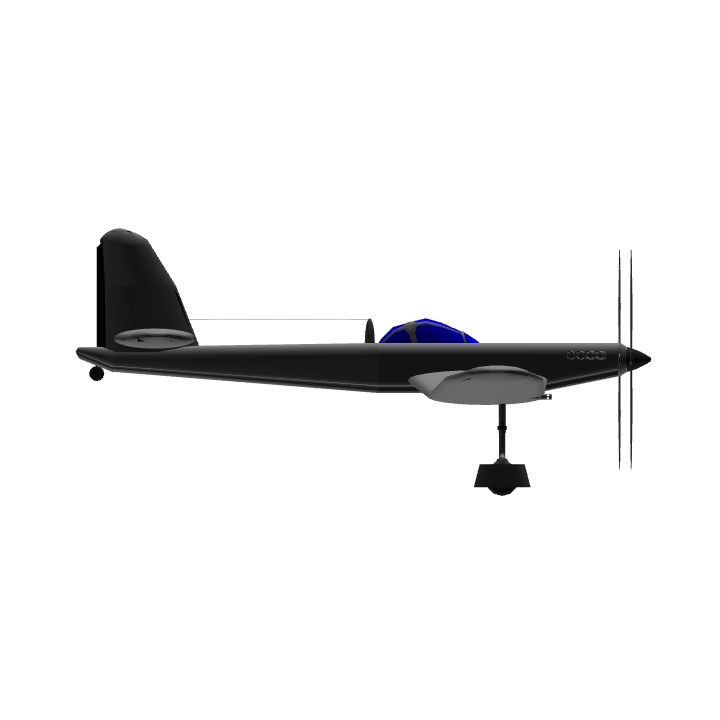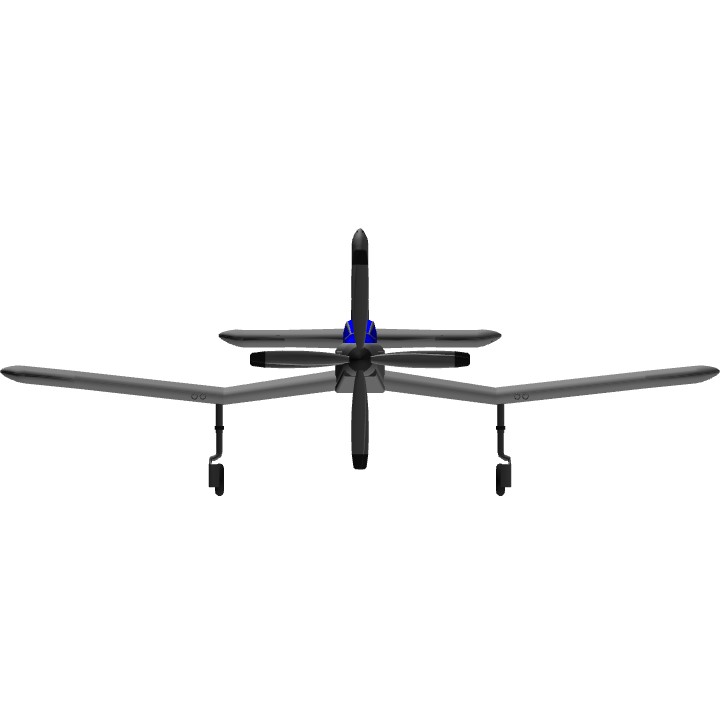Notes for pilots:
- Do NOT apply full power for takeoff. The engine is so powerful it will pull the nose forward and cause a prop strike. Use between 30% and 60% throttle, using pitch control to keep the nose up.
- Be sure to keep the nose up when landing, and do not apply the brakes too quickly. Failure to do this will result in a prop strike.
- The standard chase camera does not work properly, an alternative orbit camera is hidden in the build. Cycle through to camera 1 to use this.
Build notes:
I wanted to build a fighter with a contra-rotating propeller. This was used on the Spitfire Mk 19, so seems legitimate technology to use for a World War 2 era build. It was easier to do this with the T1000 prop (and it gave the look I wanted), and I used XML to increase their power to match the T2000 engine. The only other XML that's been used is for cosmetic purposes - making a small tailwheel and creating massless, dragless fuselage pieces to make the wings look better (and create the radio antenna).
Fictional history:
Towards the end of WWII, aircraft engines of very high power were available. The challenge for designers was to find the best way to transfer that power into the speed that fighter planes required. There were two techniques for this. One was to increase the propeller size, while the other was to increase the number of propellers driven by a single engine. The GP-214 Morzal does both. A single high-power engine drives a pair of large, contra-rotating propellers in the nose. The size of propellers used is increased by using an inverted gull-wing design to keep the nose further off the ground. Tests in the design stage showed this was workable, but that applying high power on the ground would pull the nose down, causing a prop strike. This could have been a problem, but the same engine power that created this issue also allowed an easy resolution. 40% power was easily enough to get the plane airborne, and also sufficed for cruising speed. The remainder of the engine power could be reserved for fighting or other emergencies. Although the need for caution on takeoff and landing caused some grumbles, pilots were generally highly enthusiastic about the Morzal. It was blisteringly fast and combined easy handling with good agility. The stability of it as a gun platform and the high rate of roll were two particularly appreciated characteristics. Pilots of the Morzal generally used its speed advantage in boom and zoom tactics, leaving their opponents struggling to keep up and fight back. When they did manage to put up a fight, the strong airframe required to handle to engine power and the possible manoeuvres also proved robust and resistant to damage.
A good, fast fighter with a long range, the Morzal was a valuable air force asset. Its only downside was the small number of guns carried; had the war gone on longer, it would have been upgraded to carry a heavier weapon load.
Specifications
General Characteristics
- Predecessor [CLOSED] Dogfight tournament! [25 upvote prize] (WW2 Fiction & Replica)
- Successors 1 airplane(s)
- Created On Windows
- Wingspan 35.7ft (10.9m)
- Length 28.2ft (8.6m)
- Height 13.1ft (4.0m)
- Empty Weight 4,345lbs (1,971kg)
- Loaded Weight 5,398lbs (2,448kg)
Performance
- Horse Power/Weight Ratio 0.37
- Wing Loading 26.0lbs/ft2 (127.2kg/m2)
- Wing Area 207.2ft2 (19.3m2)
- Drag Points 890
Parts
- Number of Parts 79
- Control Surfaces 6
- Performance Cost 324

